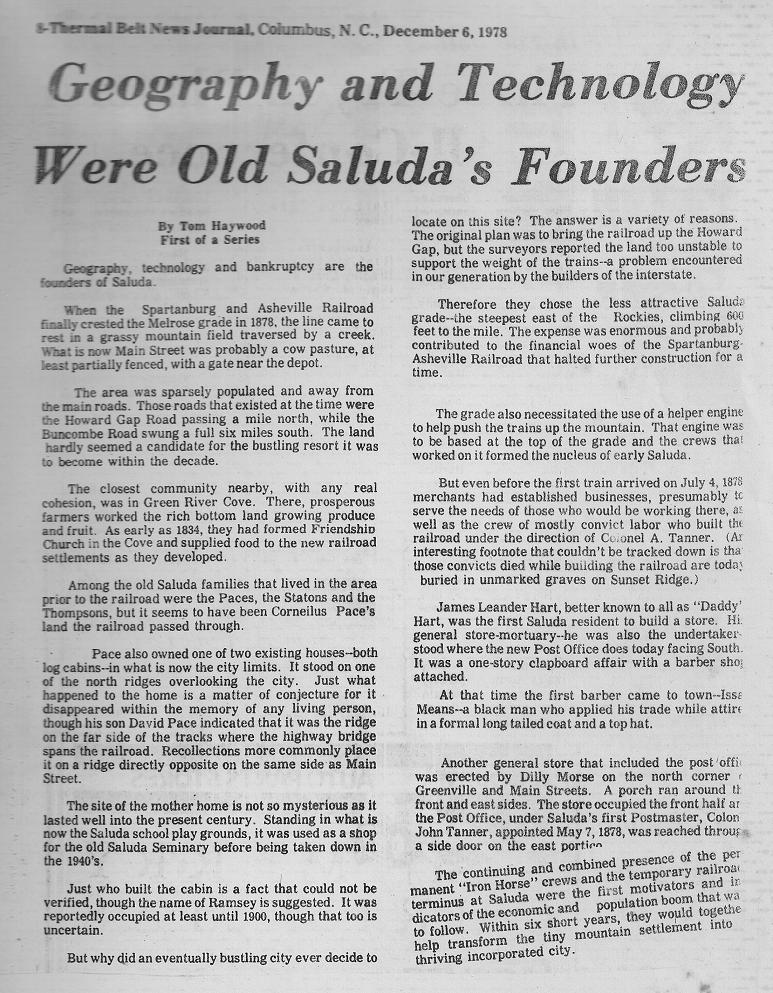- HOME
- ABOUT
- ORAL HISTORIES
- Bill Holbert
- Bill Russell
- Charlene Wooten Pace
- Charlie Fears
- Donna “Donnie” Morgan Pace
- Faye Russell Chandler
- George Jones
- Henry Twiggs
- J.D. Gilbert & Lula Staton
- John Rhodes
- Kathleen Garren Stephenson Jelley
- Martha Coates Ashley
- Martha Stoney Anderson
- Mildred Thompson Skelton
- Ruth Pace Lawter and Betty Jo Pace Thompson
- Pearlie Mae Suber Harris
- SALUDA HISTORIC DEPOT
- COON DOG DAY & OTHER EVENTS
- HISTORIC DISTRICT
- HISTORIC INNS & HOMES
- OLD PHOTOGRAPHS
- SALUDA HISTORY
- SALUDA PEOPLE
- SCRAPBOOK AND NEWS
- THE RAILROAD
- TOUR OF HISTORIC HOMES
- VINTAGE POSTCARDS
- VISIT SALUDA
Historic Saluda Historic Saluda North Carolina Established in 1881
Historic Saluda | Memories, Places, and People That Make Saluda NC an Enchanted Place to Be

SALUDA HISTORY
When the decision was made to route the railroad along the Pacolet River and over Saluda Mountain, there were few houses to accommodate even the visiting officials, much less the laborers and section bosses. Land around Pace’s Gap was owned mostly by the Paces, who seem to have been a prolific family even then.
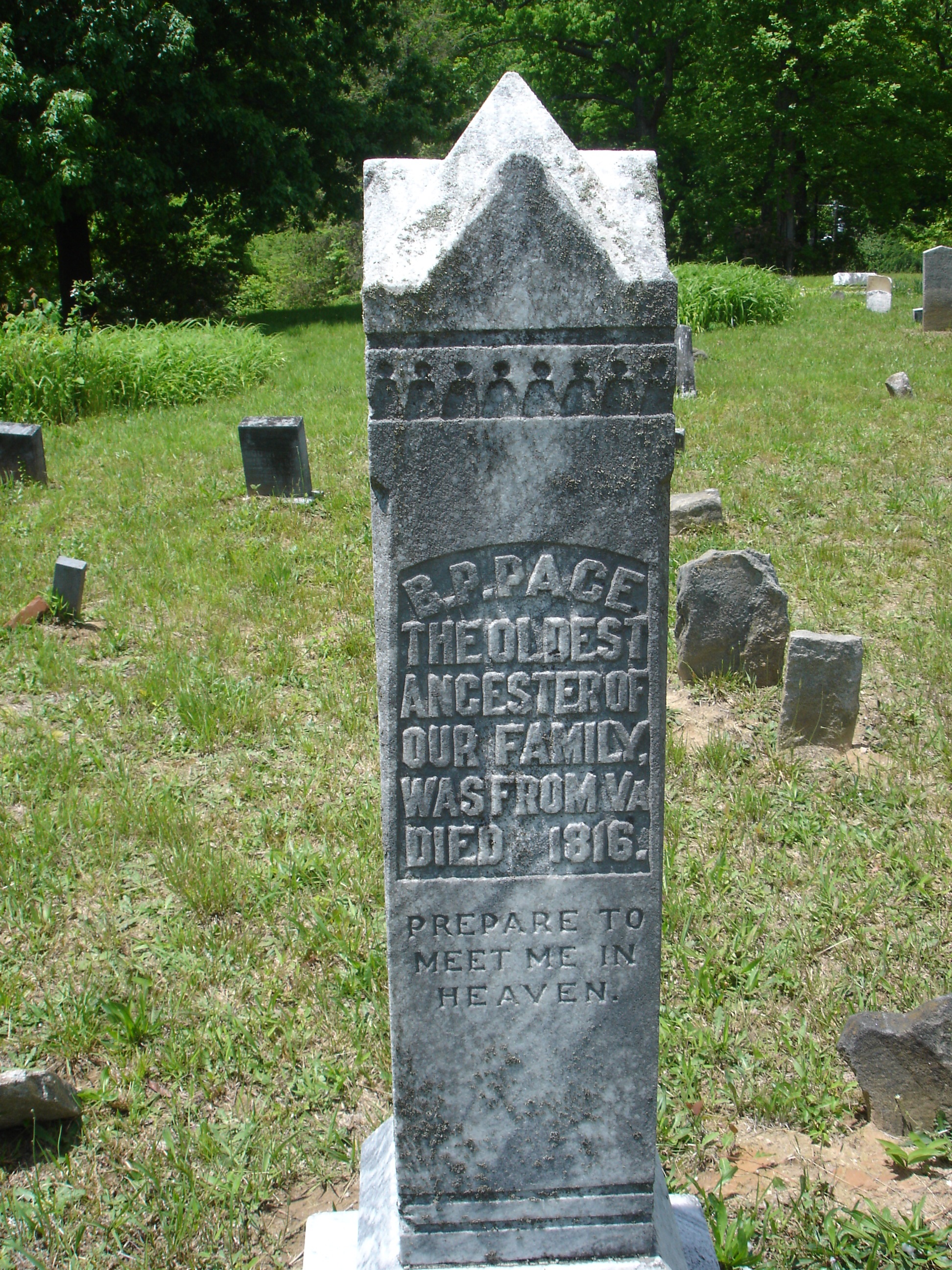 According to genealogical records, the first Pace came to Jamestown, Virginia in 1607 on the ship Marmaduke, and received a grant from King James. Some time in the late eighteenth century, some of his descendants moved inland, across Virginia, and down through the mountain passes into what is now Spartanburg County, S.C. One Burrell Pope Pace married Lydia Woodruff in the village named for her family according to the 1800 census. By 1856, when Polk County was formed from parts of Henderson and Rutherford Counties, the Paces had moved to the Saluda Mountain area and were attending Mountain Page Baptist Church. The oldest known grave in the Mountain Page Cemetery is that of Burrell Pace, who died in 1816. He was the father of Moses Pace, and moved to the area with Moses and Margaret some time after 1800. Moses lived until 1868 when he died at the age of 87 and is buried at Mountain Page with his wife Margaret, who died at age 93.
According to genealogical records, the first Pace came to Jamestown, Virginia in 1607 on the ship Marmaduke, and received a grant from King James. Some time in the late eighteenth century, some of his descendants moved inland, across Virginia, and down through the mountain passes into what is now Spartanburg County, S.C. One Burrell Pope Pace married Lydia Woodruff in the village named for her family according to the 1800 census. By 1856, when Polk County was formed from parts of Henderson and Rutherford Counties, the Paces had moved to the Saluda Mountain area and were attending Mountain Page Baptist Church. The oldest known grave in the Mountain Page Cemetery is that of Burrell Pace, who died in 1816. He was the father of Moses Pace, and moved to the area with Moses and Margaret some time after 1800. Moses lived until 1868 when he died at the age of 87 and is buried at Mountain Page with his wife Margaret, who died at age 93.
When the Paces were moving in east of Saluda, the Thompsons were moving in from the west. There were Thompsons in the Green River-Mills Creek area from the very early days. John Thompson, one of the seven brothers who came from Ireland to settle in Pennsylvania, Virginia and later in Georgia and the Carolinas moved to what is now Lynn, N.C. in the early 1800′s. One of his sons. Frank, built a house at the foot of Warrior Mountain, and another son, Asbury, named for Bishop Asbury but called Berry for short, built a house in the forks of the road where Holbert Cove Road splits from Howard’s Gap Road. The house was used as a stopover for stage coaches between Spartanburg and Asheville and served as trading post, election center, and Post Office until the railroad brought prosperity to Pace’s Gap in 1878. When Friendship Church was organized in 1834 by people living along Howard’s Gap Road, there were Thompsons in the congregation.
In any case, when the railroad men came, there were Paces and Thompsons in the neighborhood to greet them, and most of the deeds in the Polk County Records for Saluda Township in the years from 1875 to 1885 bear the name of Pace or Thompson as “grantor”.
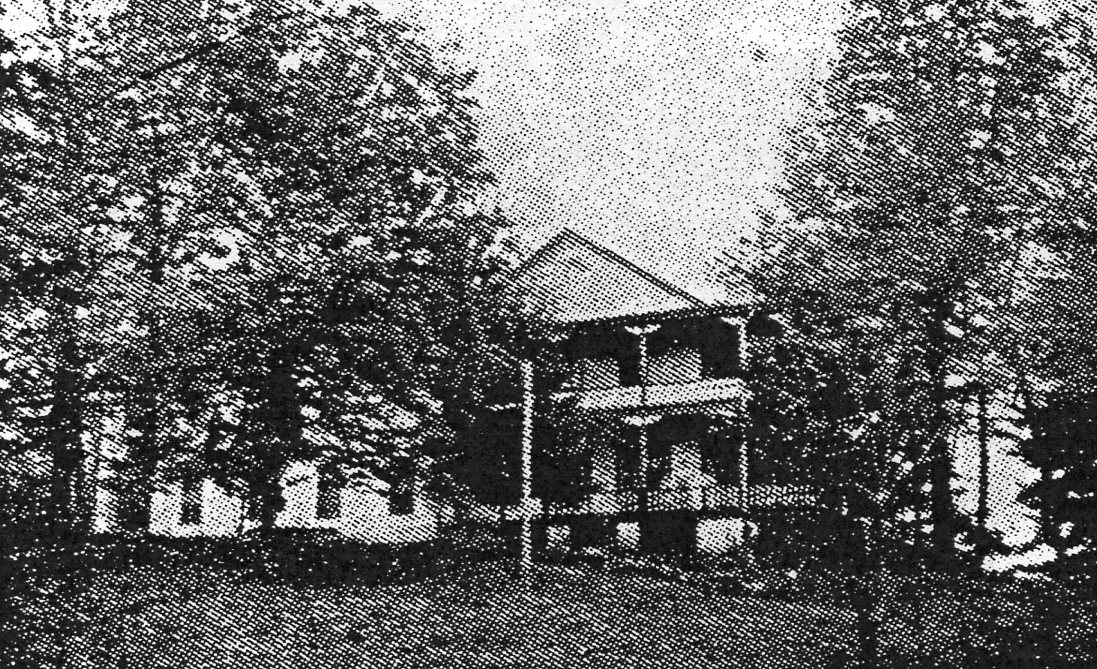 In 1877 Andrew Tanner from Rutherford County, a contractor for the Asheville/Spartanburg Railroad, had the foresight to buy property near the railroad right-of-way at the top of the grade to build a commissary for the railroad employees and the first hotel in the village, known as Mountain House. There are deeds to Mr. Tanner that year from both Paces and Thompsons.
In 1877 Andrew Tanner from Rutherford County, a contractor for the Asheville/Spartanburg Railroad, had the foresight to buy property near the railroad right-of-way at the top of the grade to build a commissary for the railroad employees and the first hotel in the village, known as Mountain House. There are deeds to Mr. Tanner that year from both Paces and Thompsons.
There was already one log house on what was later to be the school grounds, and a boarding house for stage drivers known as Pace House belonging to Ransom Pace on the old drover’s trail up Howard’s Gap. Quickly, from this beginning, the town sprang up near the right of way at the top of the grade. The laborers lived in tents and shanties near the tracks between Tryon and the top of the hill, but the foremen and engineers sought better accommodations.
When the Legislature passed an act in February 1881 chartering the town of Saluda, Andrew Tanner was named as mayor, John Forrest, J.R. Davis, and F.M. Linlev as Town Commissioners, and T.J. Ballard as Marshall to serve until an election was held. John Tanner was named first Postmaster, but J. Lee Hart would soon take his place and, known to everyone in town as “Daddy” Hart, serve as Postmaster for almost twenty years.
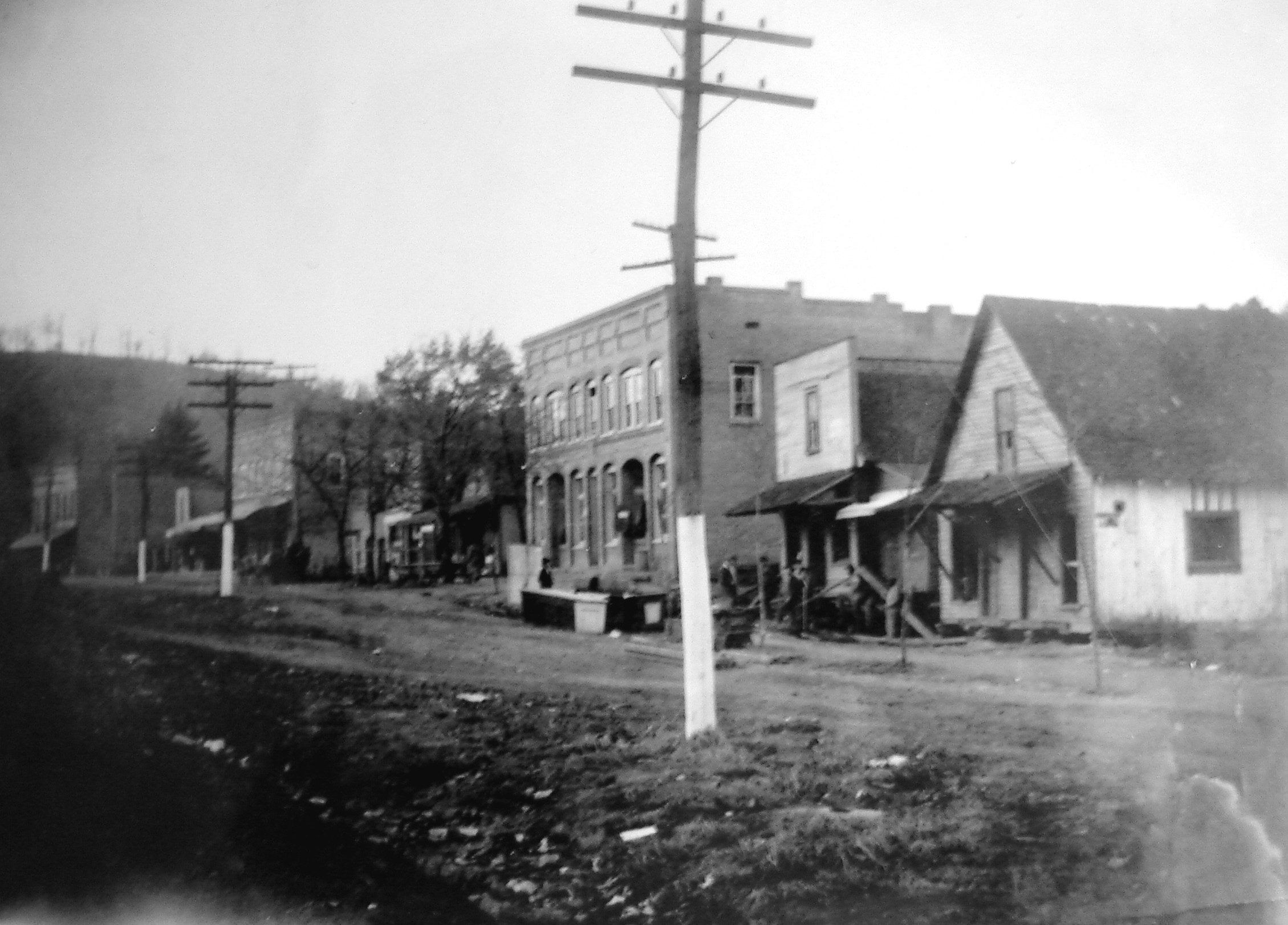 The town, which spread over seven hills like Rome, was to cover an area “one mile square with the railroad exactly in the center”. Its altitude ranged from 2096 to 2200 feet above sea level. It was named “Saluda” for the Saluda Mountains which in turn were named for the North Saluda River that flows at the bottom of the ridge that divides the states of North and South Carolina not far from town. Tradition has it that the river was named for an Indian chief whose name sounded like Saluda to white men, and means Corn River in Cherokee. An article in an early Saluda Magazine says, ‘The town was incorporated in order to protect the schools and churches from whiskey disturbances.”
The town, which spread over seven hills like Rome, was to cover an area “one mile square with the railroad exactly in the center”. Its altitude ranged from 2096 to 2200 feet above sea level. It was named “Saluda” for the Saluda Mountains which in turn were named for the North Saluda River that flows at the bottom of the ridge that divides the states of North and South Carolina not far from town. Tradition has it that the river was named for an Indian chief whose name sounded like Saluda to white men, and means Corn River in Cherokee. An article in an early Saluda Magazine says, ‘The town was incorporated in order to protect the schools and churches from whiskey disturbances.”
The very early records of the Saluda Township meetings are lost in the past, probably burned. The books, from 1918 until 1931, reveal the rise and fall of prosperity if one reads between the lines and a sporadic effort, since then, to return to the glories of bygone days. But for its first four or five decades, Saluda was one of the most exclusive resorts in the mountains, frequented by wealthy Northerners as well as the old established families of the Low-Country and Midlands. Even during the Great Depression, the owners of summer houses came to Saluda where food was plentiful and cheap and where people thrown out of work by the closing of plants and factories were glad of yard and maintenance work and housework to keep going. The hotels and inns, though, were forced to close for want of paying customers. As the Depression began to let up in the 1930′s, the hotels and boarding-houses were refurbished and reoccupied, and the summer tourist trade boomed until World War II put a stop to extended road and train travel.
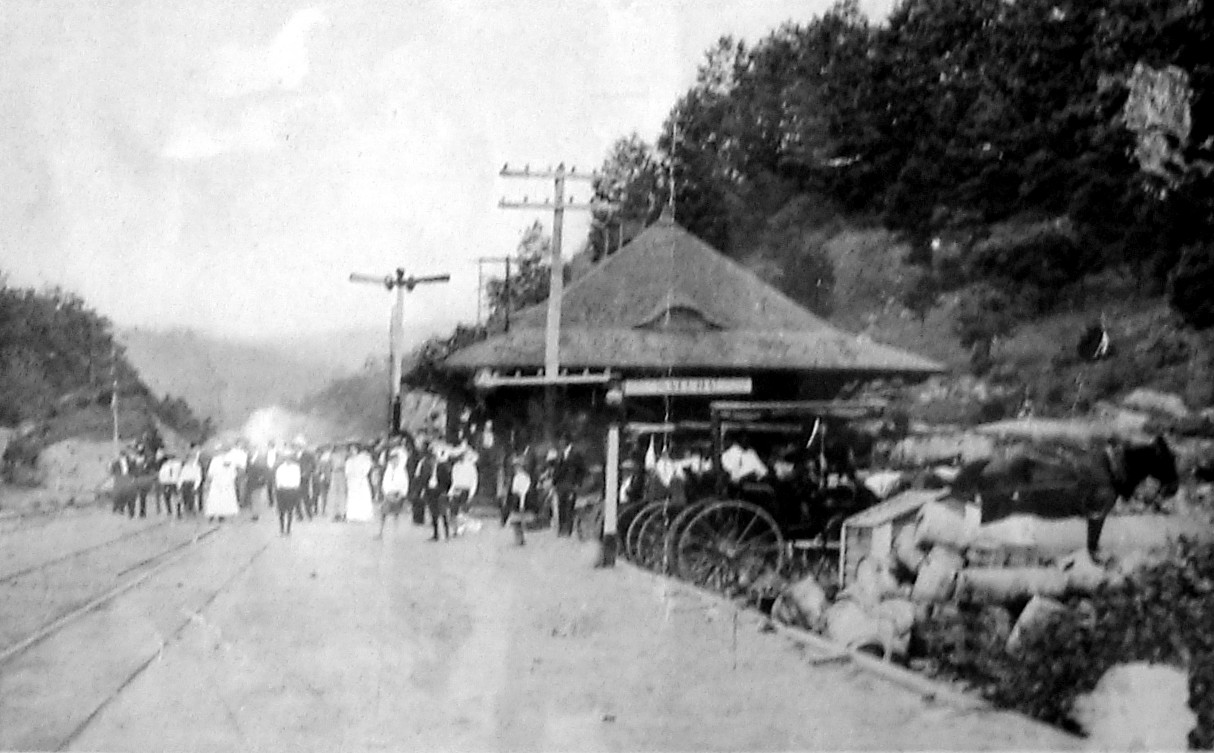 In those first five decades, there was always plenty of business for hack drivers at train time, picking up passengers and their luggage from the depot to transport them to their hotels, homes and boarding houses. Wagons and surreys and later, touring cars with jump seats, waited at the station to haul debarking tourists and lure them to their vehicles. According to old timers, everybody took wagons down to meet the trains in hopes of picking up a fare. Vendors came from restaurants in town carrying trays of fried chicken and sandwiches for passengers remaining on the trains.
In those first five decades, there was always plenty of business for hack drivers at train time, picking up passengers and their luggage from the depot to transport them to their hotels, homes and boarding houses. Wagons and surreys and later, touring cars with jump seats, waited at the station to haul debarking tourists and lure them to their vehicles. According to old timers, everybody took wagons down to meet the trains in hopes of picking up a fare. Vendors came from restaurants in town carrying trays of fried chicken and sandwiches for passengers remaining on the trains.
The year round inhabitants – the mountain people and the outlanders who were hardy enough to weather the winter storms and had settled here- fashioned their lives in two separate sections: the tourist season and the peaceful wintertime. Saluda expanded its downtown section and continued to thrive, but everyone was especially busy once the cold winter winds stopped blowing and the dogwood blossoms signaled the advent of “the Summer People”.
The term “Summer People” referred to the people from the Lowlands and Midlands of South Carolina and Georgia who came year after year to stay in houses built on the hills above town. Some of them took in selected paying guests without being considered boarding houses. The older folks spent their days visiting on front porches and enjoying the mountain air while the younger set had their fun playing tennis, going for long walks, and attending the weekly square dances. The Summer People’s grandchildren, great-grandchildren, and great-great-grandchildren in many cases still occupy the big airy Victorian houses at least part of the year.
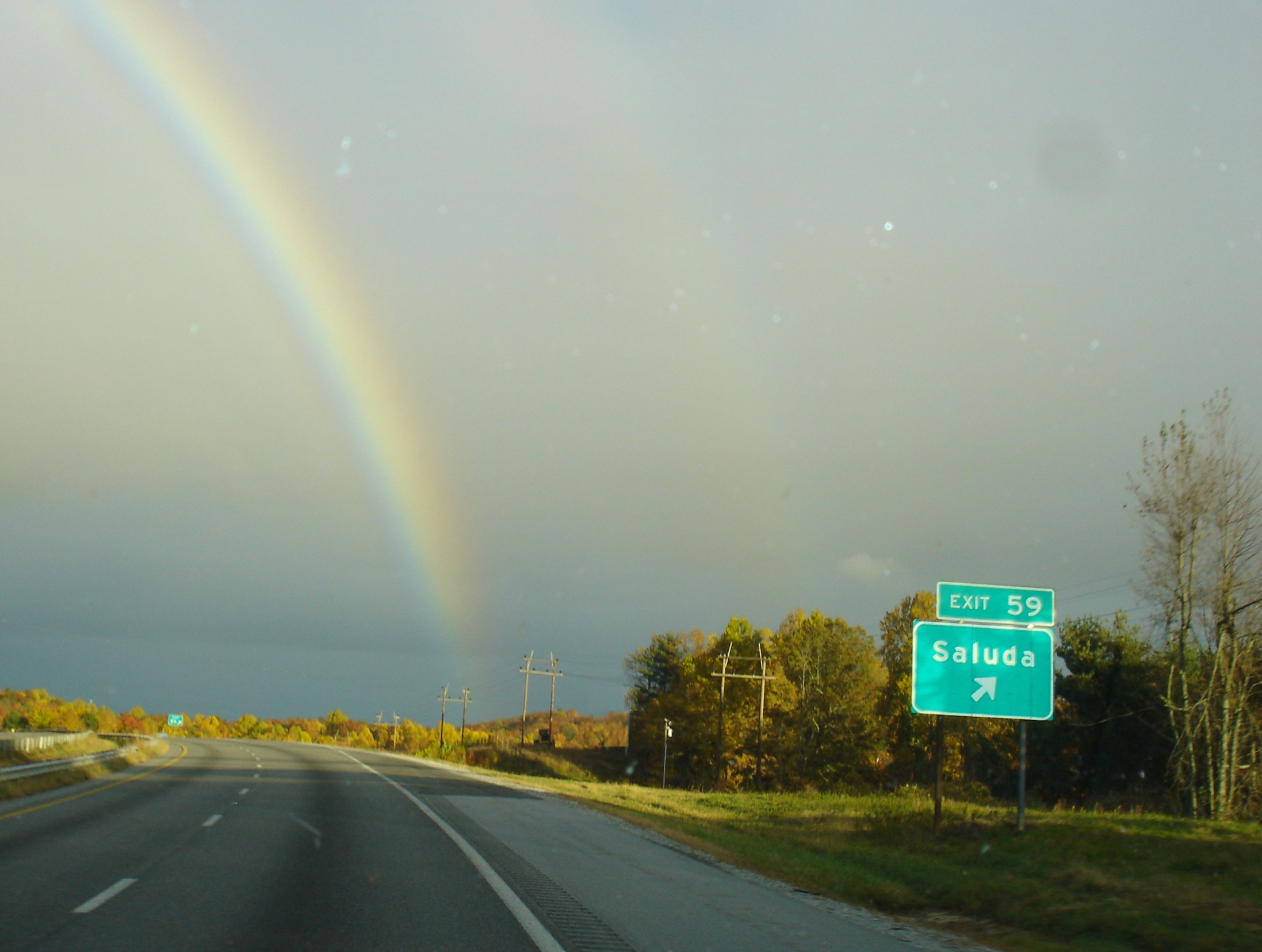 In the 1950s and ’60s, the federal government began building an interstate highway from Charleston to Asheville that would route traffic away from downtown Saluda. Since the new road would go over Warrior Mountain, many of the old folks thought it would never be finished. The railroad builders had known that the ground was too unstable to support a roadbed, just as the Cherokee had known. But with the interstate finished from Charleston to Columbus and from Asheville to Saluda, the highway department was determined to finish the missing link. It took eight years and many millions of dollars to finish the 7.5 mile stretch, but finally- by drilling holes in the rock to drain off the water of the main artesian wells and stop-bench grading to prevent landslides- Interstate 26 was completed in 1976.
In the 1950s and ’60s, the federal government began building an interstate highway from Charleston to Asheville that would route traffic away from downtown Saluda. Since the new road would go over Warrior Mountain, many of the old folks thought it would never be finished. The railroad builders had known that the ground was too unstable to support a roadbed, just as the Cherokee had known. But with the interstate finished from Charleston to Columbus and from Asheville to Saluda, the highway department was determined to finish the missing link. It took eight years and many millions of dollars to finish the 7.5 mile stretch, but finally- by drilling holes in the rock to drain off the water of the main artesian wells and stop-bench grading to prevent landslides- Interstate 26 was completed in 1976.
Since the heavy traffic had increased to dire proportions on the Tryon-to-Saluda section of Highway 176 during those eight years, Saludans breathed a sigh of relief. The big trucks now roared by at a distance, and people who wanted to leisurely browse and shop came into town.
For a concise and historically accurate compilation of Saluda’s history, read the PDF document below prepared by George A. Jones, Th.M., Ph.D. for the Saluda Centennial, August 9, 1981.
 Mountain Traditions Magazine published an excellent article about Saluda’s history by Terry Ruscin.
Mountain Traditions Magazine published an excellent article about Saluda’s history by Terry Ruscin.
Tour of Saluda Churches
Churches play an essential role in any community, and Saluda has some of the oldest churches in the area. In March 2011 Saluda’s 130th Birthday Celebration Committee organized a tour of Saluda’s houses of worship: Saluda Methodist, Saluda Presbyterian, the Episcopal Church of the Transfiguration, the First Baptist Church, Mountain Page, and Friendship Baptist Church. Here are some highlights (photos and audio recordings by Cindy Tuttle):
Also, here is an article written in 1978 by Tom Haywood with some additional insight into the founding of Saluda: (Click on the article to enlarge if needed.)
